Jupiter-Venus conjunction, More Snow
Posted: 3 March 2023
Clouds arrived after sunrise on Tuesday, 28 February 2023, becoming mostly overcast mid-day. I put the Dome Cover ON as there was rain and snow in the forecast. That evening Jupiter and Venus were 1.2° apart in the western sky. I was able to get these photos as clouds were beginning to hide the planets. Three of the Galilean Moons are visible in the telephoto image taken through the clouds.
iPhone 13 Pro Max, Camera app (Night Mode, 3 seconds, 1X lens)
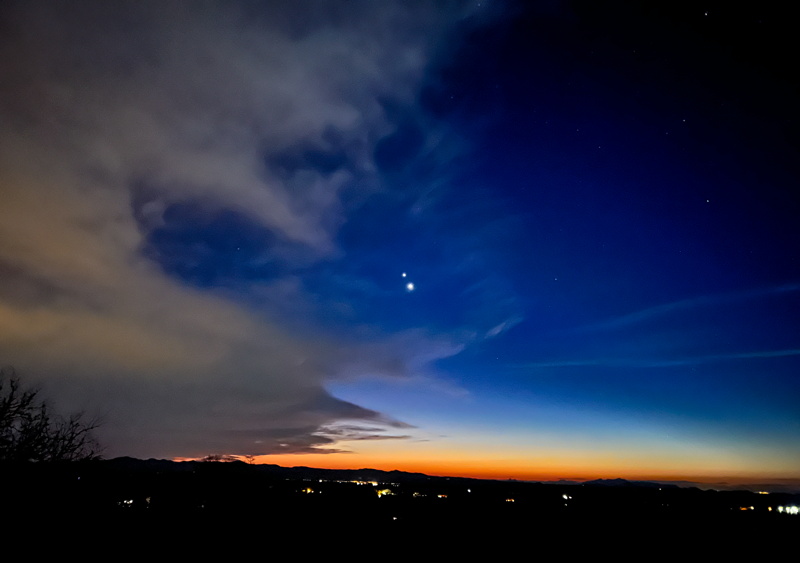
D850 DSLR (f/8, 1/4sec, ISO 400, FL 600mm, cropped)
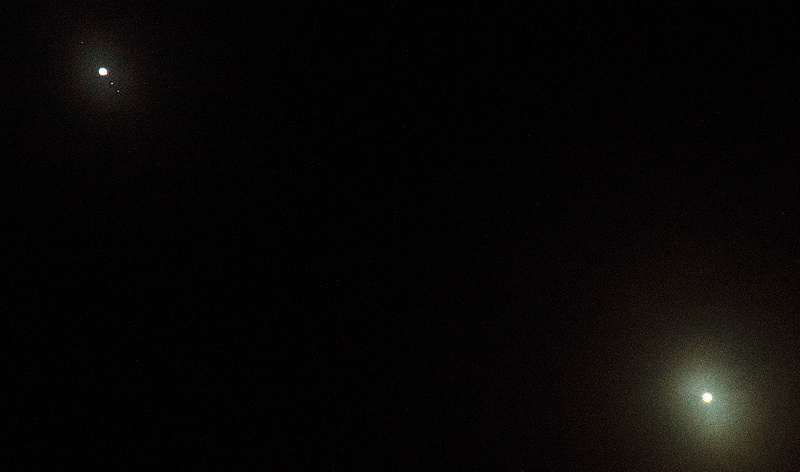
Wednesday, 1 March, was cloudy. I got lucky and was able to photograph the close conjunction of Jupiter (left) and Venus (right) 0.5° apart using the iPhone.
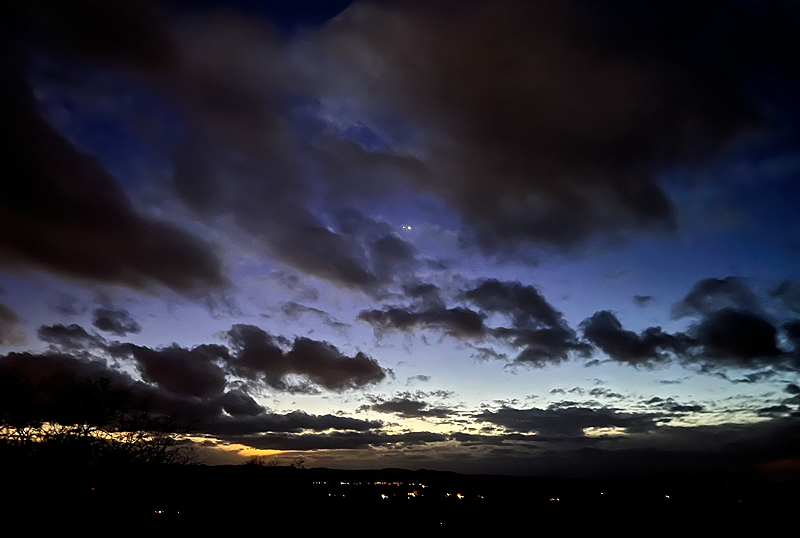
Snow began late Wednesday night and ended Thursday mid-morning, 2 March, with an accumulation of 4.5" (precip total 0.11"). Snow was widespread across the area.
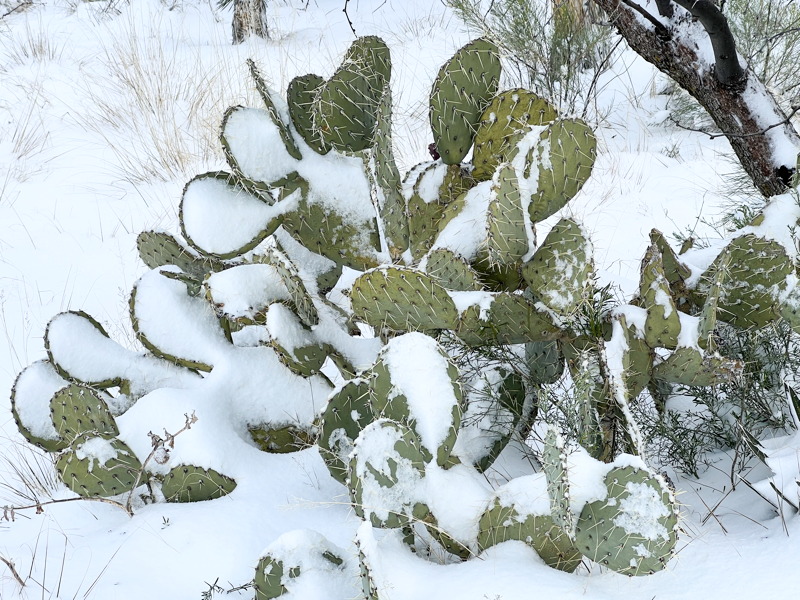
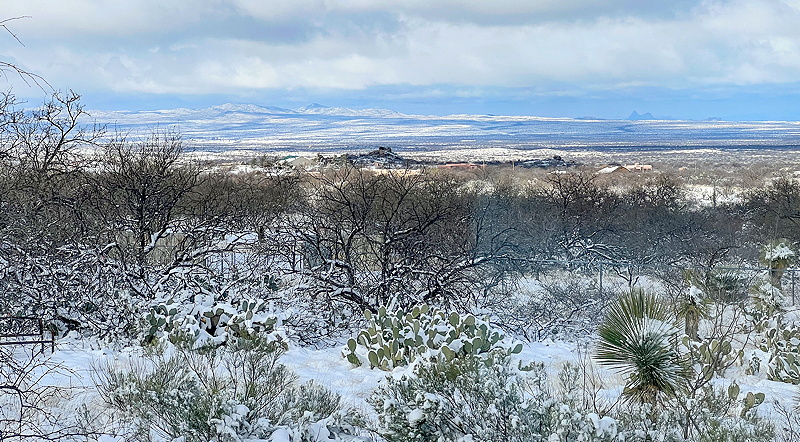
The sky began clearing mid-day.
|
Open: Thursday, 2 March 2023, 1811 MST Temperature: 37°F |
Session: 1839 Conditions: Mostly clear |
Equipment:
12" f/8 LX600 w/StarLock
2" 24mm UWA eyepiece
2" 50mm eyepiece
Camera:
iPhone 13 Pro Max
There was lots of snow around the observatory dome. The waxing gibbous Moon is at the top of the photo.
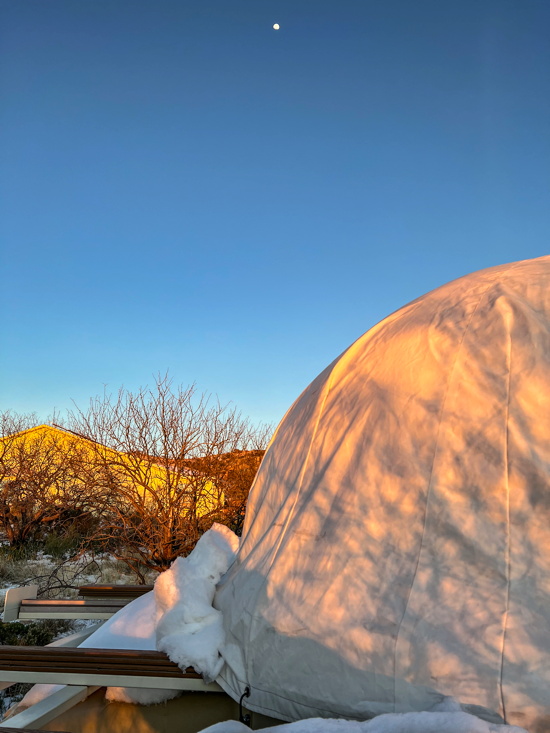
1821 MST: Sunset.
Dome Cover OFF.
1828 MST: LX600 ON, StarLock OFF, High Precision OFF.
Viewed Venus, then Jupiter, 102X.
Viewed Venus and Jupiter, 49X. Both planets were visible just inside the same field-of-view (FOV). Their separation was 59'04". I wish I had been able to observe them in the telescope the previous night when they were only 30' apart (same size as the Moon's full disk).
Attached the LiDAR Cover to the iPhone 13 Pro Max and mounted the iPhone on the 2" 50mm eyepiece using the Levenhuk adapter. Took this afocal 49X image of the planets using NightCap Camera (ISO 34, 1/120sec, 1X lens). Venus is at the top (distorted at the extreme edge of the eyepiece FOV. Jupiter and two of the Galilean Moons are at the bottom of the image.
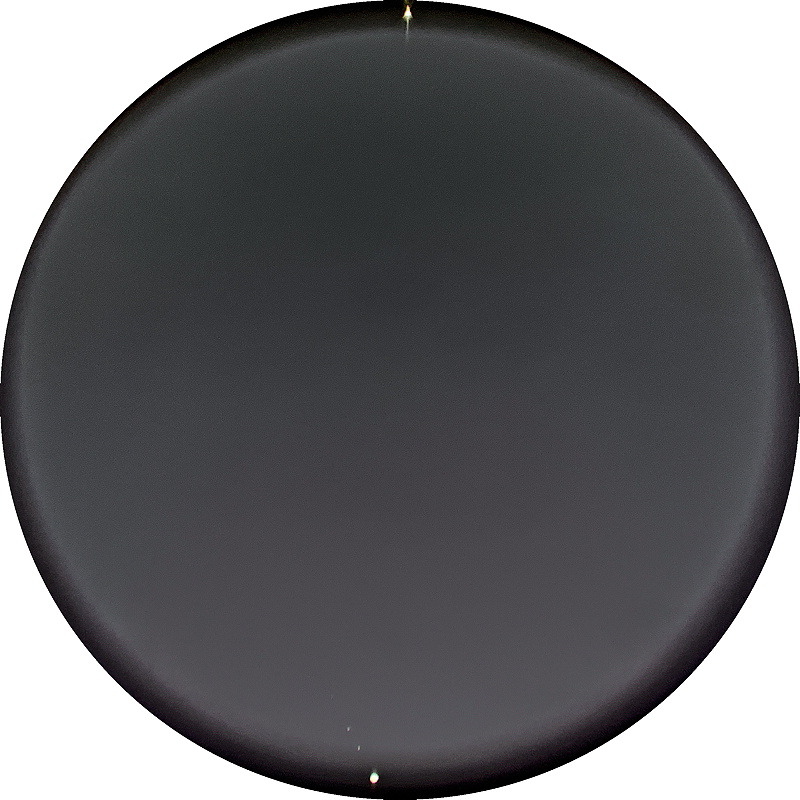
Viewed Venus and Jupiter, 12x50 binoculars. Pretty sight.
1856 MST: I stepped outside of the observatory and took this iPhone photo using the Camera app (Night Mode, 3 seconds, 1X). The planets are in the upper righthand corner, with Venus above Jupiter. There was a lot of snow around the observatory dome.
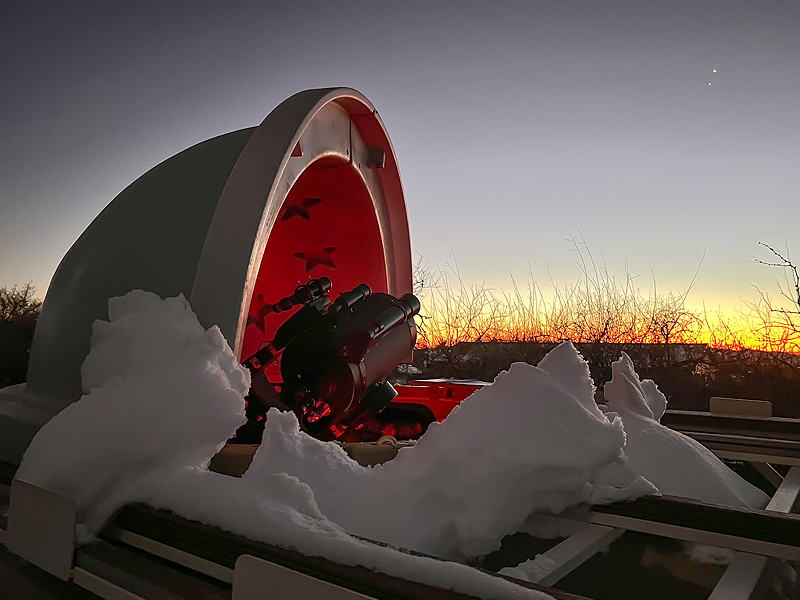
Slewed to the Moon and took this iPhone afocal 49X photo using NightCap Camera (ISO 34, 1/4000sec, 1X lens). The image scale is the same as for the planets image. Sure would have been neat to have viewed the planets at their smaller separation on 1 Wednesday.
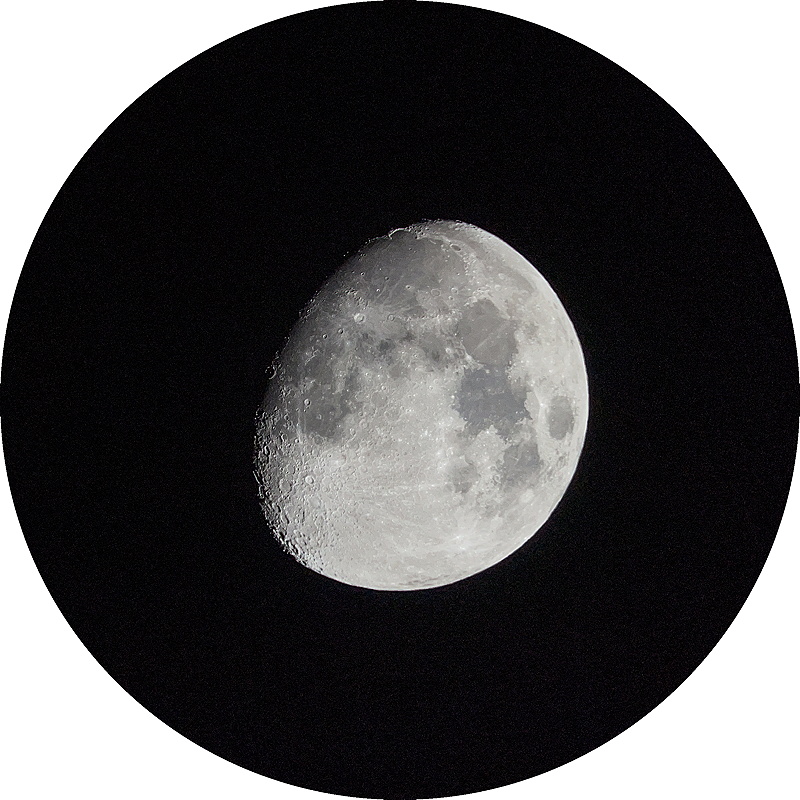
Viewed the Moon, 102X.
1915 MST: LX600 OFF.
|
Close: Thursday, 2 March 2023, 1931 MST Temperature: 33°F |
Session Length: 1h 20m Conditions: Clear |
Comments are welcome using Email. Twitter users can use the button below to tweet this report to their followers. Thanks.
Cassiopeia Observatory Home Page
Copyright ©2023 Michael L. Weasner / mweasner@mac.com. Email Etiquette.
URL = http://www.weasner.com/co/Reports/2023/03/03/index.html
